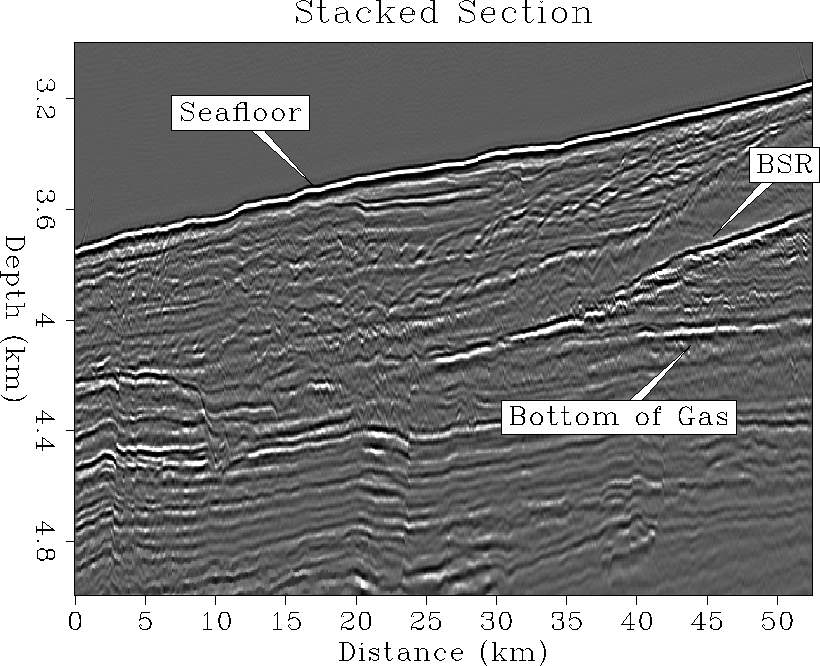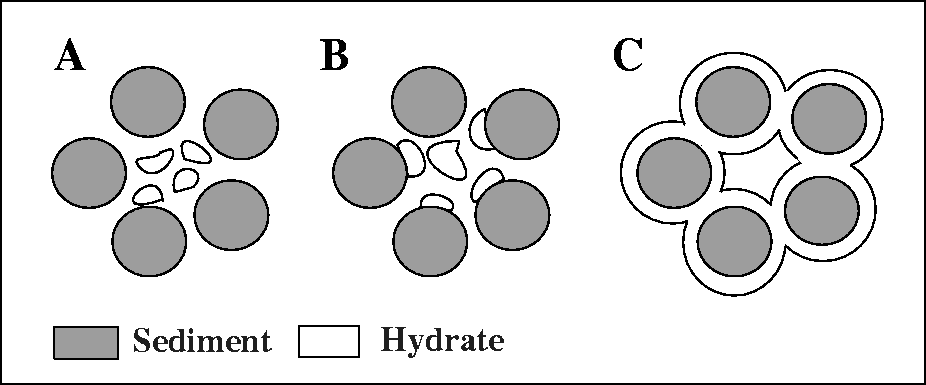 |
Figure 1 Stacked Section.
Seismic data from the Blake Outer Ridge (Figure 1), offshore Florida and Georgia, display a prominent bottom simulating reflector (BSR). This BSR is caused by the presence of hydrate in the sediment above and free gas saturation in the sediments underneath Ecker (1997).
 |
In order to evaluate the amount of hydrate that might be present in the sediments, we examine three different micromechanical models of possible hydrate deposition in the pore space. In the first model, we assume that hydrate is suspended in the water thus only contributing to the bulk modulus of the pore fluid (Figure 2A). In this case, the formation and deposition of hydrate in the sediment would have no effect on the stiffness of the sediments. In the second model, hydrate becomes part of the solid sediment frame (Figure 2B). This causes a reduction of porosity and a weak stiffenening of the sediment structure. The third model assumes that hydrate cements grain contacts, thus significantly changing the rock stiffness and again reducing the porosity (Figure 2C). This last model is probably not likely to be found at the Blake Ridge, since the sediments in this region are highly unconsolidated Matsumoto et al. (1996). However, since we want to examine the effect of different hydrate depositions on saturations and seismic amplitude, we include this model in our analysis.
 |